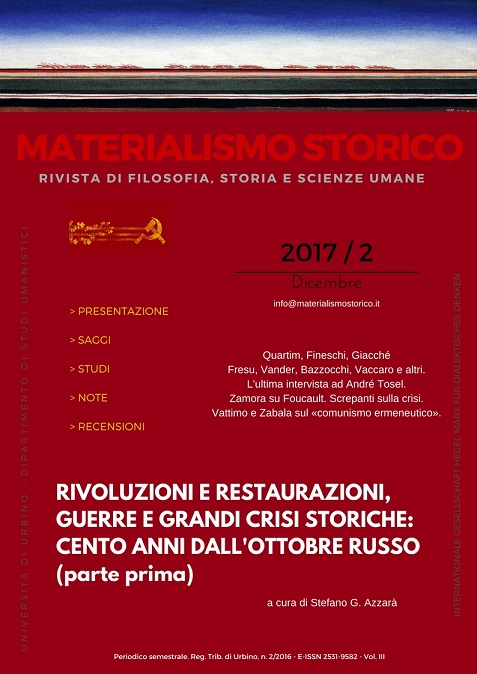Abstract
In Gramsci’s view, the October Revolution goes beyond Marx’s logical scheme, because it makes the autonomy and irreducibility of the political visible. Lenin’s act shows that the political is not a consequence of the economic dimension. In Gramsci’s thought we observe a further reflection on the revolution: from the enhancement/valorisation of the autonomy of the political to the overcoming of the class-against-class scheme as an interpretative pattern of the history and actions of the workers' movement.
The officials and leaders of the Italian Communist Party were the heirs of the cultural climate of the early decades of the twentieth century and of the Gramscian lesson which called for greater existential depth and closeness to the reasons of life. Existential depth also meant assuming the contradictions of existence and the dimension of politics. Unlike the professional revolutionaries who – faced with the contradictions of life and the burden of pain and tension between freedom and security, between joy and the impending death – relied on doctrine and its fulfilment, the leaders and officials of the new party, more or less consciously, were men and women who made themselves intellectual citizens.
Keywords: Italian Communist Party; Gramsci; Togliatti; Hegemony; Autonomy of Political.
L'opera è pubblicata sotto Licenza Creative Commons - Attribution-NonCommercial-NoDerivatives 4.0 International (CC BY-NC-ND 4.0) che permette ad altri di condividere l'opera indicando la paternità intellettuale e la prima pubblicazione su questa rivista.
Gli autori mantengono i diritti sulla loro opera e cedono alla rivista il diritto di prima pubblicazione
